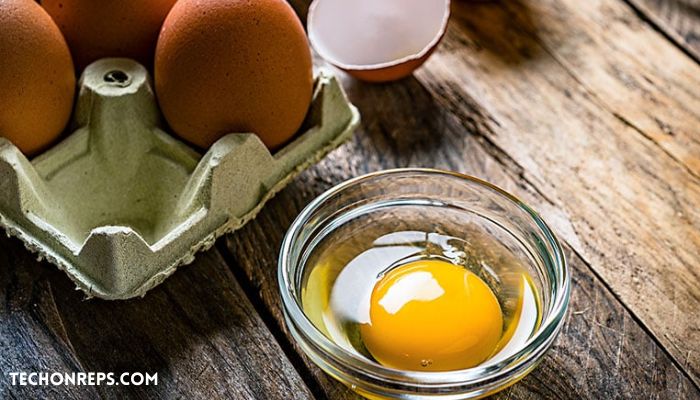Thats Not How Its Done Raw: The Art of Raw Cooking
Raw cooking, also known as raw foodism or raw veganism, is a dietary lifestyle that involves consuming unprocessed and uncooked foods. The philosophy behind raw cooking is that heating food above a certain temperature destroys its natural enzymes and nutrients, leading to a loss of nutritional value. Raw cooking emphasizes the consumption of fruits, vegetables, nuts, seeds, and sprouted grains.
One of the main benefits of raw cooking is the preservation of vital nutrients. Raw foods are rich in vitamins, minerals, and enzymes that are essential for optimal health. By consuming these foods in their natural state, you can ensure that you are getting the maximum nutritional benefit from your meals. Additionally, raw cooking can improve digestion and promote better nutrient absorption.

The Benefits of Eating Raw: Health, Nutrition, and Sustainability
Improved digestion and nutrient absorption are two key benefits of eating raw. Raw foods are rich in fiber, which helps to promote healthy digestion and prevent constipation. The enzymes present in raw foods also aid in the breakdown and absorption of nutrients, making it easier for your body to extract the maximum nutritional value from your meals.
Another benefit of eating raw is increased energy levels. Raw foods are naturally high in vitamins, minerals, and antioxidants, which can help to boost your energy levels and improve overall vitality. Many people who adopt a raw food lifestyle report feeling more energized and alert throughout the day.
In addition to the health benefits, eating raw can also have a positive impact on the environment. Raw foods require less energy to produce and have a lower carbon footprint compared to processed and packaged foods. By choosing to eat raw, you are not only benefiting your own health but also contributing to a more sustainable future.
Essential Tools and Techniques for Raw Cooking: From Sprouting to Dehydrating
Sprouting seeds and grains is an essential technique in raw cooking. Sprouting involves soaking seeds or grains in water until they begin to germinate and sprout. This process increases the nutrient content of the seeds and makes them easier to digest. Sprouted seeds and grains can be used in a variety of raw recipes, such as salads, wraps, and smoothies.
Using a dehydrator is another important tool in raw cooking. A dehydrator is a device that removes moisture from food without cooking it. This allows you to create a wide range of raw snacks and treats, such as kale chips, fruit leather, and raw crackers. Dehydrating foods also helps to preserve their nutritional value and extend their shelf life.
Making nut milk and cheese is a popular technique in raw cooking. Nut milk is made by blending soaked nuts with water and then straining the mixture to remove any solids. This creamy and nutritious milk can be used as a dairy-free alternative in recipes or enjoyed on its own. Nut cheese is made by fermenting nuts with probiotics, which gives it a tangy and cheesy flavor.
The Power of Fermentation: Unlocking New Flavors and Nutrients
Fermentation is a process that involves the breakdown of carbohydrates by bacteria or yeast. This process not only enhances the flavor of foods but also increases their nutritional value. Fermented foods are rich in probiotics, which are beneficial bacteria that support gut health and boost the immune system.
There are many benefits to incorporating fermented foods into your diet. Fermentation increases the bioavailability of nutrients, making them easier for your body to absorb. It also helps to improve digestion by promoting the growth of healthy bacteria in the gut. Additionally, fermented foods can help to reduce inflammation and support overall immune function.
Some popular fermented foods to try include sauerkraut, kimchi, kombucha, kefir, and miso. These foods can be enjoyed on their own or used as ingredients in raw recipes. Fermented foods add a unique and tangy flavor to dishes, making them a delicious addition to any raw food meal.
Raw Desserts: Indulging in Sweetness without Guilt
Raw desserts are a guilt-free way to satisfy your sweet tooth. These desserts are made with natural and unprocessed ingredients, such as fruits, nuts, and dates. Raw desserts are typically free from refined sugars, dairy, and gluten, making them suitable for those with dietary restrictions or food sensitivities.
There are many options when it comes to raw desserts. Some popular choices include raw chocolate mousse, raw cheesecake, raw brownies, and raw fruit tarts. These desserts are not only delicious but also packed with nutrients and antioxidants. They can be enjoyed as a healthy treat or served as a special occasion dessert.
In addition to being healthier than traditional desserts, raw desserts also offer benefits such as improved digestion and increased energy levels. The natural sugars found in fruits provide a quick source of energy without the crash that often accompanies refined sugars. Raw desserts also contain fiber, which helps to regulate blood sugar levels and promote satiety.
The Role of Superfoods in Raw Cooking: Boosting Nutrition and Flavor
Superfoods are nutrient-dense foods that are particularly beneficial for health and well-being. These foods are often rich in vitamins, minerals, antioxidants, and other beneficial compounds. Incorporating superfoods into your raw meals can help to boost their nutritional value and add new flavors and textures.
Some common superfoods include chia seeds, hemp seeds, spirulina, maca powder, goji berries, and cacao nibs. These foods can be added to smoothies, salads, dressings, or used as toppings for desserts. Superfoods not only enhance the taste of your meals but also provide a wide range of health benefits.
For example, chia seeds are high in omega-3 fatty acids, fiber, and protein. They can help to reduce inflammation, support digestion, and promote healthy skin. Spirulina is a blue-green algae that is rich in protein, vitamins, and minerals. It can help to boost energy levels, support detoxification, and strengthen the immune system.
Raw Food for Every Meal: Breakfast, Lunch, and Dinner Ideas
Raw cooking offers a wide range of options for every meal of the day. Whether you prefer something light and refreshing or hearty and satisfying, there are plenty of raw recipes to choose from.
For breakfast, you can start your day with a refreshing green smoothie or a bowl of overnight chia pudding. These options are quick and easy to prepare and provide a nutritious start to your day. You can also enjoy a variety of raw granolas, energy bars, or fruit salads for a more substantial breakfast.
For lunch, raw salads are a popular choice. You can create a variety of salads using different combinations of vegetables, fruits, nuts, and seeds. Raw wraps or collard green wraps are also a great option for a filling and portable lunch. You can fill them with your favorite vegetables, sprouts, and spreads for a delicious and nutritious meal.
For dinner, raw zucchini noodles or kelp noodles are a great alternative to traditional pasta. You can top them with raw marinara sauce or pesto for a flavorful and satisfying meal. Raw soups made with blended vegetables or gazpacho are also a delicious option for dinner.
Raw Cuisine Around the World: Exploring Different Cultures and Traditions
Raw food is not limited to one specific cuisine or culture. In fact, many cultures around the world have traditional raw dishes that are enjoyed for their flavor and health benefits.
In Japan, raw fish is commonly consumed in the form of sushi or sashimi. These dishes showcase the natural flavors of the fish and are often served with soy sauce, wasabi, and pickled ginger. In Thailand, raw papaya salad is a popular dish that combines shredded green papaya with lime juice, chili, and peanuts.
In Mexico, ceviche is a raw seafood dish that is marinated in citrus juice and served with onions, tomatoes, and cilantro. In Italy, carpaccio is a dish made with thinly sliced raw beef or fish, typically served with olive oil, lemon juice, and Parmesan cheese.
Exploring different raw cuisines can be a fun and educational way to expand your culinary horizons. You can try recreating traditional raw dishes from different cultures or experiment with fusion recipes that combine flavors and techniques from various cuisines.
Raw Cooking for Special Diets: Gluten-Free, Vegan, and Paleo Options
Raw cooking offers a wide range of options for those following special diets such as gluten-free, vegan, or paleo. Many raw recipes naturally fit into these dietary restrictions and can be enjoyed by individuals with specific dietary needs.
For those following a gluten-free diet, raw cooking provides a variety of options. Raw recipes often use alternative grains such as quinoa or buckwheat instead of wheat-based products. Raw desserts are also typically free from gluten-containing ingredients such as flour or breadcrumbs.
For vegans, raw cooking is a great way to enjoy a plant-based diet while still getting all the necessary nutrients. Raw meals are rich in fruits, vegetables, nuts, seeds, and legumes, which provide a wide range of vitamins, minerals, and protein. Raw desserts are also free from dairy products and eggs.
For those following a paleo diet, raw cooking can be a great addition to their meal plan. Raw recipes often include lean meats, seafood, fruits, vegetables, nuts, and seeds – all of which are allowed on the paleo diet. Raw desserts can also be made with paleo-friendly ingredients such as coconut oil, almond flour, and raw honey.
Tips for Transitioning to a Raw Food Lifestyle: Overcoming Challenges and Enjoying the Journey
Transitioning to a raw food lifestyle can be a challenging process, but with the right mindset and support, it can also be a rewarding and enjoyable journey. Here are some tips to help you get started:
- Start slowly: Instead of diving into a fully raw diet overnight, start by incorporating more raw foods into your meals gradually. Begin by adding a raw salad or smoothie to your daily routine and gradually increase the amount of raw foods you consume.
- Find support: Joining a raw food community or finding a support group can be helpful during your transition. Surrounding yourself with like-minded individuals who share your goals and challenges can provide motivation and inspiration.
- Stay motivated: Remind yourself of the reasons why you chose to adopt a raw food lifestyle. Whether it’s for health reasons, environmental concerns, or personal growth, keeping your goals in mind will help you stay motivated on your journey.
- Experiment with recipes: Explore different raw recipes and experiment with flavors and textures. There are countless resources available online, including blogs, cookbooks, and YouTube channels dedicated to raw cooking. Trying new recipes will keep your meals exciting and prevent boredom.
- Listen to your body: Pay attention to how your body feels after consuming raw foods. Notice any changes in energy levels, digestion, or overall well-being. This will help you understand what works best for your body and make adjustments accordingly.
Transitioning to a raw food lifestyle is a personal journey that requires patience, perseverance, and an open mind. Embrace the process and enjoy the benefits that come with nourishing your body with fresh, whole foods.



